
Deutsch-Chinesische Enzyklopädie, 德汉百科
 Saudi Arabia
Saudi Arabia
 Argentina
Argentina
 Australia
Australia
 Belgium
Belgium
 Brazil
Brazil
 China
China
 Denmark
Denmark
 Germany
Germany

 Financial
Financial
 International Bank for Cooperation
International Bank for Cooperation
 France
France
 India
India
 Indonesia
Indonesia
 Internationaler Währungsfonds
Internationaler Währungsfonds
 Camille Gutt
Camille Gutt
 Internationaler Währungsfonds
Internationaler Währungsfonds
 Christine Lagarde
Christine Lagarde
 Internationaler Währungsfonds
Internationaler Währungsfonds
 Dominique Strauss-Kahn
Dominique Strauss-Kahn
 Internationaler Währungsfonds
Internationaler Währungsfonds
 Horst Köhler
Horst Köhler
 Internationaler Währungsfonds
Internationaler Währungsfonds
 Ivar Rooth
Ivar Rooth
 Internationaler Währungsfonds
Internationaler Währungsfonds
 Jacques de Larosière
Jacques de Larosière
 Internationaler Währungsfonds
Internationaler Währungsfonds
 Johan Witteveen
Johan Witteveen
 Internationaler Währungsfonds
Internationaler Währungsfonds
 Michel Camdessus
Michel Camdessus
 Internationaler Währungsfonds
Internationaler Währungsfonds
 Per Jacobsson
Per Jacobsson
 Internationaler Währungsfonds
Internationaler Währungsfonds
 Pierre-Paul Schweitzer
Pierre-Paul Schweitzer
 Internationaler Währungsfonds
Internationaler Währungsfonds
 Rodrigo Rato
Rodrigo Rato
 Internationaler Währungsfonds
Internationaler Währungsfonds
 Kristalina Georgiewa
Kristalina Georgiewa
 Italy
Italy
 Japan
Japan
 Canada
Canada
 Malaysia
Malaysia
 Mexico
Mexico
 Netherlands
Netherlands
 Nigeria
Nigeria
 Norwegen
Norwegen
 Austria
Austria
 Poland
Poland
 Republic of Korea
Republic of Korea
 Russia
Russia
 Saudi Arabia
Saudi Arabia
 Sweden
Sweden
 Switzerland
Switzerland
 Spain
Spain
 South Africa
South Africa
 Venezuela
Venezuela
 United States
United States
 United Kingdom
United Kingdom

 Washington, D.C.
Washington, D.C.

 Important International Organizations
Important International Organizations

 Economy and trade
Economy and trade
 Economic and political research
Economic and political research

国际货币基金组织(法语:Fonds Monétaire International,缩写:FMI;英语:International Monetary Fund,缩写:IMF)于1945年12月27日成立,与世界银行同为世界两大金融机构,由189个国家组成,致力于促进全球货币合作,确保金融稳定,促进国际贸易。职责是监察货币汇率和各国贸易情况、提供技术和资金协助[3][4][5],确保全球金融制度运作正常;其总部设置于美国华盛顿特区。
Der Internationale Währungsfonds (IWF; englisch International Monetary Fund, IMF; auch bekannt als Weltwährungsfonds) ist eine rechtlich, organisatorisch und finanziell selbständige Sonderorganisation der Vereinten Nationen mit Sitz in Washington, D.C., USA.
Hauptaufgabe des IWF ist die Vergabe von Krediten an Länder ohne ausreichende Währungsreserven, die in Zahlungsbilanzschwierigkeiten geraten sind. Weitere Tätigkeitsfelder sind die Förderung der internationalen Zusammenarbeit in der Währungspolitik, Ausweitung des Welthandels, Stabilisierung von Wechselkursen, Überwachung der Geldpolitik und technische Hilfe.
Der IWF und seine Schwesterorganisation Weltbank haben ihren Ursprung im 1944 geschaffenen Bretton-Woods-System fester Wechselkurse, das auf der damals mit Gold gedeckten Leitwährung US-Dollar beruhte. Sie waren als internationale Steuerungsinstrumente geplant, mit denen eine Wiederholung der Währungsturbulenzen der Zwischenkriegszeit und der Fehler des Goldstandards aus den 1920er Jahren verhindert werden sollte. Beide Organisationen werden daher als Bretton-Woods-Institution bezeichnet. Die Kreditvergabe des IWF ist an wirtschaftspolitische Auflagen geknüpft, die die Rückzahlung der Kredite sichern sollen. Anders als der IWF vergibt die Weltbank auch Kredite für spezielle Projekte.
Der IWF hat zurzeit (Stand April 2020) 189 Mitgliedstaaten, deren Stimmrecht sich an ihrem Kapitalanteil orientiert. Die Mitgliedstaaten mit den größten Stimmanteilen sind: USA 16,51 %, Japan 6,15 %, China 6,08 %, Deutschland 5,32 %, Frankreich 4,03 %, Vereinigtes Königreich 4,03 % und Italien 3,02 %. Von den deutschsprachigen Ländern haben außerdem Luxemburg 0,29 %, Österreich 0,81 % und die Schweiz 1,18 % Stimmenanteile.[4]
Beschlüsse müssen im IWF mit einer Mehrheit von 85 % getroffen werden. Dadurch verfügen jeweils die USA allein und die EU-Staaten gemeinsam de facto über eine Sperrminorität.[5]
国際通貨基金(こくさいつうかききん、英語: International Monetary Fund, IMF)は、国際金融、並びに、為替相場の安定化を目的として設立された国際連合(国連)の専門機関である。本部は、アメリカ合衆国の首都ワシントンD.C.にある。2018年現在、加盟国は189か国である[2]。
加盟国の経常収支が著しく悪化した場合などに融資などを実施することで、国際貿易の促進、加盟国の高水準の雇用と国民所得の増大、為替の安定、などに寄与する事を目的としている。 また、為替相場の安定のために、経常収支が悪化した国への融資や、為替相場と各国の為替政策の監視などを行っている。各国の中央銀行の取りまとめ役のような役割を負う。世界銀行と共に、国際金融秩序の根幹を成す。
The International Monetary Fund (IMF) is an international organization headquartered in Washington, D.C., consisting of 189 countries working to foster global monetary cooperation, secure financial stability, facilitate international trade, promote high employment and sustainable economic growth, and reduce poverty around the world while periodically depending on the World Bank for its resources.[1] Formed in 1944 at the Bretton Woods Conference primarily by the ideas of Harry Dexter White and John Maynard Keynes,[6] it came into formal existence in 1945 with 29 member countries and the goal of reconstructing the international payment system. It now plays a central role in the management of balance of payments difficulties and international financial crises.[7] Countries contribute funds to a pool through a quota system from which countries experiencing balance of payments problems can borrow money. As of 2016, the fund had XDR 477 billion (about US$ 667 billion).[8]
Through the fund and other activities such as the gathering of statistics and analysis, surveillance of its members' economies, and the demand for particular policies,[9] the IMF works to improve the economies of its member countries.[10] The organization's objectives stated in the Articles of Agreement are:[11] to promote international monetary co-operation, international trade, high employment, exchange-rate stability, sustainable economic growth, and making resources available to member countries in financial difficulty.[12] IMF funds come from two major sources: quotas and loans. Quotas, which are pooled funds of member nations, generate most IMF funds. The size of a member's quota depends on its economic and financial importance in the world. Nations with larger economic importance have larger quotas. The quotas are increased periodically as a means of boosting the IMF's resources in the form of special drawing rights.[13]
The current Managing Director (MD) and Chairwoman of the IMF is Bulgarian Economist Kristalina Georgieva, who has held the post since October 1, 2019.[14]
Gita Gopinath was appointed as Chief Economist of IMF from 1 October 2018. She received her PhD in economics from Princeton University. Prior to her IMF appointment she was economic adviser to the Chief Minister of Kerala, India.[15]
Le Fonds monétaire international (FMI) est une institution internationale regroupant 189 pays, dont le but est de promouvoir la coopération monétaire internationale, garantir la stabilité financière, faciliter les échanges internationaux, contribuer à un niveau élevé d’emploi, à la stabilité économique et faire reculer la pauvreté2.
Le FMI a ainsi pour fonction d'assurer la stabilité du système monétaire international (SMI) et la gestion des crises monétaires et financières. Pour cela, il fournit des crédits aux pays qui connaissent des difficultés financières mettant en péril l'organisation gouvernementale du pays, la stabilité de son système financier (banques, marchés financiers) ou les flux d'échanges de commerce international avec les autres pays.
Lors d'une crise financière, pour éviter qu’un pays ne fasse « défaut » (c’est-à-dire que ce pays ne puisse plus rembourser ses créanciers, voire ne plus payer ses dépenses courantes), le FMI lui prête de l’argent le temps que la confiance des agents économiques revienne. Le FMI conditionne l’obtention de prêts à la mise en place de certaines réformes économiques visant en principe à réguler la gestion des finances publiques (ingérence financière) et à établir une croissance économique équilibrée à long terme.
L'institution a été créée le 27 décembre 1945 et devait à l'origine garantir la stabilité du système monétaire international, dont l'écroulement après le krach de 1929 avait eu des effets catastrophiques sur l'économie mondiale. Après 1976 et la disparition d’un système de change fixe, le FMI perd l'essentiel de sa raison d'être et hérite d'un nouveau rôle face aux problèmes d'endettement des pays en développement et à certaines crises financières.
Il Fondo Monetario Internazionale (in sigla FMI; in inglese International Monetary Fund, IMF) è un'organizzazione internazionale pubblica[1] a carattere universale composta dai governi nazionali di 189 Paesi e insieme al gruppo della Banca Mondiale fa parte delle organizzazioni internazionali dette di Bretton Woods, dal nome della località in cui si tenne la famosa conferenza che ne sancì la creazione. L'FMI è stato formalmente istituito il 27 dicembre 1945, quando i primi 44 stati firmarono l'accordo istitutivo e l'organizzazione nacque nel maggio del 1946. Attualmente gli Stati membri sono 189.
El Fondo Monetario Internacional o FMI (en inglés: International Monetary Fund, IMF) es una organización financiera internacional con sede en Washington D. C., Estados Unidos. Nace como idea el 22 de julio de 1944 en los acuerdos de Bretton Woods, una reunión de 730 delegados de 44 países aliados de la Segunda Guerra Mundial, entrando en vigor oficialmente el 27 de diciembre de 1945. Después de 1976 y de la desaparición del sistema de cambio fijo, el FMI toma un papel preponderante ante países en desarrollo y crisis financieras internacionales. En 2010, durante la 14ª revisión general de cuotas los fondos financieros disponibles del FMI se situaban en 755 700 millones de U.S.dólares.1
A través del fondo y otras actividades como la recolección de estadísticas y datos, monitoreo de las actividades económicas de los países miembros, y la demanda de políticas concretas,2 el FMI trabaja para mejorar la economía de sus países miembros.3 Los objetivos proclamados por la organización son:4 promover la cooperación monetaria internacional, comercio internacional, reducir la desocupación, conseguir tasas de cambio sustentables, lograr crecimiento económico, y otorgar razonablemente recursos a países miembros en dificultades económicas.5 El FMI se financia con dos grandes herramientas: cuotas y préstamo. Las cuotas son aportes realizados por los países miembros al fondo común de la organización. Las mayores economías hacen aportes proporcionales mayores que las economías más pequeñas. Además, las obligaciones de cuotas aumentan periódicamente como forma de aumentar los recursos de los que puede disponer el FMI en forma de derechos especiales de giro.6
Esta organización ha sido fuertemente criticada en las últimas décadas. Las principales críticas se centran en el papel dominante que tienen los países desarrollados dentro del organismo, lo que causa que el FMI oriente sus políticas globales al fomento de un capitalismo que suele denominarse neoliberal,7 a causa de haber impuesto a los países en vías de desarrollo —y más recientemente a algunos países europeos— sus programas económicos basados en el Consenso de Washington que consisten en la reducción del déficit y del gasto público y consecuentemente de servicios y prestaciones sociales, con fundamento en las políticas y teorías monetaristas y en el principio de libre mercado,8 que deben llevarse a cabo como condiciones de los préstamos realizados y que según sus críticos ha provocado un aumento de la brecha entre ricos y pobres y un empeoramiento de los servicios públicos, como la sanidad.9 También está acusada por haber apoyado y financiado a las dictaduras militares en Latinoamérica y Africa,10 y se le han criticado puntualmente sus políticas sobre medio ambiente11 y alimentación.12
Международный валютный фонд, (МВФ) (англ. International Monetary Fund, IMF) — специализированное учреждение (валютный фонд) Организации объединённых наций (ООН) с главным офисом в городе Вашингтон, США.
189 стран являются членами МВФ, в его структурах работают 2500 человек из 133 государств мира. МВФ предоставляет кратко- и среднесрочные кредиты при дефиците платёжного баланса государства. Предоставление кредитов обычно сопровождается набором определённых условий и рекомендаций. Политика и рекомендации МВФ в отношении развивающихся стран неоднократно подвергались критике, суть которой состоит в том, что выполнение рекомендаций и условий, в итоге, направлено не на повышение самостоятельности, стабильности и развитие национальной экономики государства, а лишь на привязывание её к международным финансовым потокам.
В отличие от Всемирного банка, деятельность МВФ сосредоточена на относительно кратковременных макроэкономических кризисах. Всемирный банк предоставляет кредиты только бедным странам, МВФ может давать кредиты любой из своих стран-членов, которая испытывает нехватку иностранной валюты для покрытия краткосрочных финансовых обязательств.
 Egypt
Egypt
 Algeria
Algeria
 Indonesia
Indonesia
 Iran
Iran
 Kuwait
Kuwait
 Libya
Libya
 Pakistan
Pakistan
 Saudi Arabia
Saudi Arabia
 Turkey
Turkey
 United Arab Emirates
United Arab Emirates

 Important International Organizations
Important International Organizations
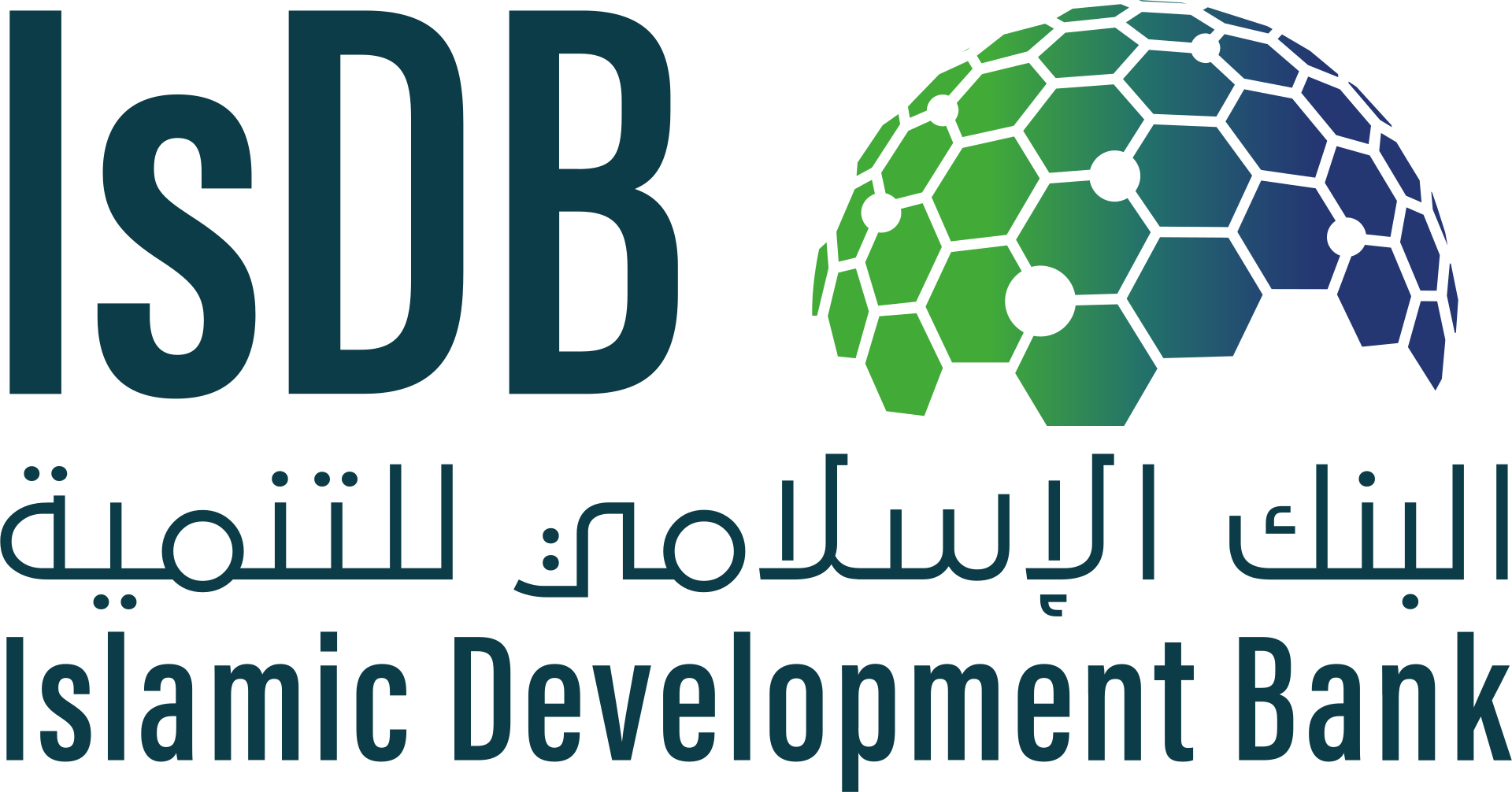




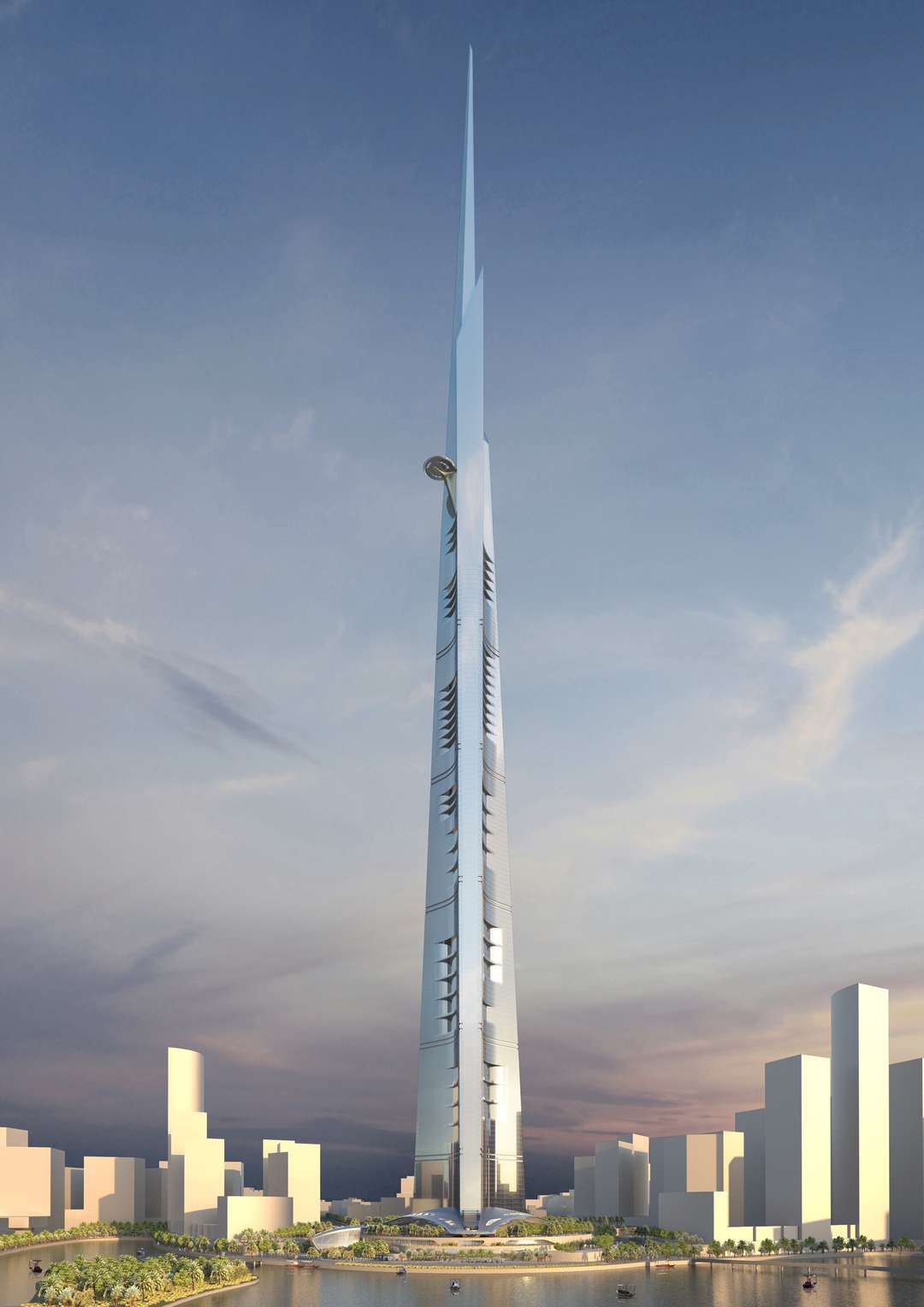
吉达塔(阿拉伯语:برج جدة,英语:Jeddah Tower),前称一哩塔(阿拉伯语:برج الميل,英语:Mile-High Tower)、王国塔(阿拉伯语:برج المملكة,英语:Kingdom Tower),位于沙特阿拉伯城市吉达(Jeddah)一项摩天大楼计划,计划中的大楼高约1,600米(5,250呎),高度接近全球第一高峰──珠穆朗玛峰(Mount Everest,8848米)的五分之一,但因为当地地质无法承受过重的建筑物,且在沙漠中兴建高楼也是难题,在后续的修改中被缩减到1,008米(3,307呎)。[8]大楼建成后将超越迪拜的哈里发塔成为全球最高建筑物,亦是全球第一座高度1000米的建筑物。[9]但位于迪拜的迪拜河港塔于2016年10月10日动工,设计高度约1,100~1,200米以上,意味着两座塔的世界第一高楼与人工构造物的竞争正式开始。2018年2月,由于建筑工人欠薪发生罢工事件。截至2018年8月,大厦周围基础设施建设进行中,但主楼仍然没有动静。
吉达塔是耗资200亿美元王国城市发展区的地标。内部设计从底层至楼顶阶段分别为四季酒店、四季服务公寓、特级办公楼、豪华公寓和世界最高的观望台(位于652米的157层)。
Der Jeddah Tower,[1] früher bekannt als Kingdom Tower, ist ein Bauprojekt im Norden von Dschidda, an der Westküste von Saudi-Arabien. Der Wolkenkratzer wäre zum Zeitpunkt der Fertigstellung mit 1007 Metern das höchste Bauwerk der Welt.
Der Auftraggeber des Projekts ist die Kingdom Holding Company, die zu 94 % dem Milliardär Prinz al-Walid ibn Talal gehört. Der Architekt ist Adrian Smith,[2] der auch den Burj Khalifa entworfen hat. Das Projekt soll vom britischen Unternehmen Hyder Consulting in Zusammenarbeit mit der Arup umgesetzt werden. Die Kosten werden mit 1,2 Milliarden Dollar veranschlagt.[3] Er wird das Herzstück und erste Bauphase des 20 Milliarden US-Dollar teuren Bauvorhabens Jeddah Economic City,[4] das entlang des Roten Meeres, an der nördlichen Seite Dschiddas, errichtet wird. Auf einer Höhe von 652 Meter[5] soll sich die höchste Aussichtsplattform der Welt befinden.
ジッダ・タワーは、サウジアラビアのジッダで建設中の高さ1,008mのハイパービルディングである。
ジッダ・タワーは、アラビア語でブルジルマムラカ(برج المملكة Burj al Mamlakah)と呼ばれた。「マムラカ」は「王国」を意味し、キングダム・タワーはこの名称の英訳である。
当初は高さ1,600mで計画され、その高さにちなみ「マイル=ハイ・タワー」(Mile-High Tower、アラビア語: برج الميل)という名称であった。
アメリカのシカゴにも、1956年にフランク・ロイド・ライトによって提案・デザインされた「マイル=ハイ・タワー」(ザ・イリノイ)という名称の超高層ビル計画があったが、建設には至らなかった。フランク・ロイド・ライトによるマイル=ハイ・タワーのデザインは、その後、アラブ首長国連邦のドバイに建設されたブルジュ・ハリーファのデザインの原型になった。
Jeddah Tower (Arabic: برج جدة),[12] previously known as Kingdom Tower (برج المملكة) and Mile-High Tower (برج الميل), is a skyscraper under construction on the north side of Jeddah, Saudi Arabia. It is planned to be the world's first 1 km (3,281 ft) high building, and the centrepiece and first phase of a development and tourist attraction known as Jeddah Economic City.[13]
Initial plans called for a mile high structure[citation needed], but the geology of the area proved unsuitable for a tower of that height. The current design, created by American architect Adrian Smith, who also designed Burj Khalifa, incorporates many unique structural and aesthetic features. The creator and leader of the project is Saudi Arabian prince Al-Waleed bin Talal,[14] a grandson of Ibn Saud, and nephew of the Kings of Saudi Arabia before him. Al-Waleed is the chairman of Kingdom Holding Company (KHC),[15] which is a partner in the Jeddah Economic Company (JEC), which was formed in 2009 for the development of Jeddah Tower and City.[15]
The building has polarised the public and critics. Proponents praise it as a potentially culturally significant icon that will symbolize the nation's wealth and power. Others question the backers' socioeconomic motives, and forecast that it will have negative financial consequences.[citation needed]
La Jeddah Tower (en arabe برج جدة) (anciennement Kingdom Tower, en français Tour du Royaume, en arabe برج المملكة), est un gratte-ciel en construction à Djeddah, en Arabie saoudite, qui devrait atteindre 1 001 m de hauteur1. Avec un budget estimé à 4,6 milliards de riyals saoudiens, elle est entièrement financée par le prince Al-Walid ben Talal ben Abdelaziz Al Saoud via la Kingdom Holding Company. Première étape et pièce maîtresse d'un quartier en développement nommé la Ville du Royaume (Kingdom City, مدينة المملكة) qui se situe au bord de la Mer Rouge au nord de Djeddah, la tour devrait atteindre une hauteur sans précédent, devenant le plus haut bâtiment du monde, en plus d'être la première structure à dépasser le kilomètre.
Le projet initial comprenait une tour d'une hauteur de 1 600 m (un mille international)4 (d'où son ancien nom Mile-High Tower) mais la géologie de la région ne se prêtant pas à une structure de cette hauteur, cette dernière a donc été réduite. De même qu'elle l'était pour la Burj Khalifa, la hauteur finale est tenue secrète mais aurait été supérieure à 1 000 m.
Le plan, conçu par l'architecte Adrian Smith, incorpore de nombreux traits structurels et esthétiques uniques.
La Jeddah Tower (inglese per "Torre di Gedda") o Kingdom Tower (inglese per "Torre del regno"; in arabo: برج المملكة, "Torre dell'Impero", chiamata anche Mile Tower, inglese per "Torre (alta un) miglio") è un super-grattacielo che sorgerà sulle rive del Mar Rosso a Gedda, in Arabia Saudita.
Il progetto è esecutivo, l'edificio sarà alto 1.000 m effettivi e si prevede la fine della costruzione per il 2020. A fine costruzione dovrebbe essere il grattacielo più alto al mondo davanti al Burj Khalifa superando i suoi 829,8 metri.
La Jeddah Tower3 o Torre Yeda, anteriormente llamada Kingdom Tower (en árabe, برج المملكة Burj al-Mamlaka), es un rascacielos en construcción ubicado en Yeda, Arabia Saudí, el cual se terminará entre 2020 y 2021. El proyecto se anunció el 2 de agosto de 2011 y está dirigido por el arquitecto estadounidense Adrian Smith —el cual también diseñó el Burj Khalifa, el actual rascacielos más alto del mundo—. Tendrá el récord de ser el segundo edificio más alto del planeta, por detrás de la Dubai Creek Tower (también en construcción), midiendo aproximadamente 1 000 metros de altura.
Inicialmente la construcción se proyectó en 1 600 metros de altura, pero en mayo de 2008 los datos arrojados por los estudios del suelo revelaron que no sería posible, por lo que se redujo a 1 007 metros. Será de planta triangular, con el objetivo de soportar mejor las fuerzas ejercidas por los vientos. La preparación del terreno se inició en enero de 2012, mientras que su construcción comenzó el 24 de junio de 2013.
Jeddah Tower (араб. برج جدة Бурдж-Джидда), ранее известная как Kingdom Tower (араб. برج الممملكة Бурдж аль Мамляка) и Mile-High Tower (араб. برج الميل), — проект одного из высочайших зданий в мире. Строится в 32 км к северу от Джидды, Саудовская Аравия.
Небоскрёб предварительной стоимостью в 4,6 млрд риалов (1,23 млрд долларов США[6]; для сравнения: стоимость строительства небоскрёба «Бурдж-Халифа» — 1,5 млрд долл. США) и высотой 1007 метров должен стать центром нового района Kingdom Center[7], в котором будут жить 80 тыс. человек. Общая стоимость проекта, располагающегося на берегу Красного моря, должна составить 75 млрд риалов (20 млрд долларов). По завершении строительства здание должно стать высочайшим в мире и первым высотой более одного километра. Первый проект здания предусматривал высоту около одной мили, однако, после анализа грунтов на месте строительства, высота была снижена до одного километра.
Архитектором здания является архитектурное бюро Эдриана Смита, инициатором всего проекта — саудовский принц Аль-Валид бин Талаль, один из богатейших людей на Ближнем Востоке и племянник короля Саудовской Аравии.[8] Аль-Валид является президентом корпорации Kingdom Holding Company (KHC), одной из крупнейших в стране.[9] Для финансирования строительства в 2009 году была специально создана компания Jeddah Economic Company (JEC).[9]




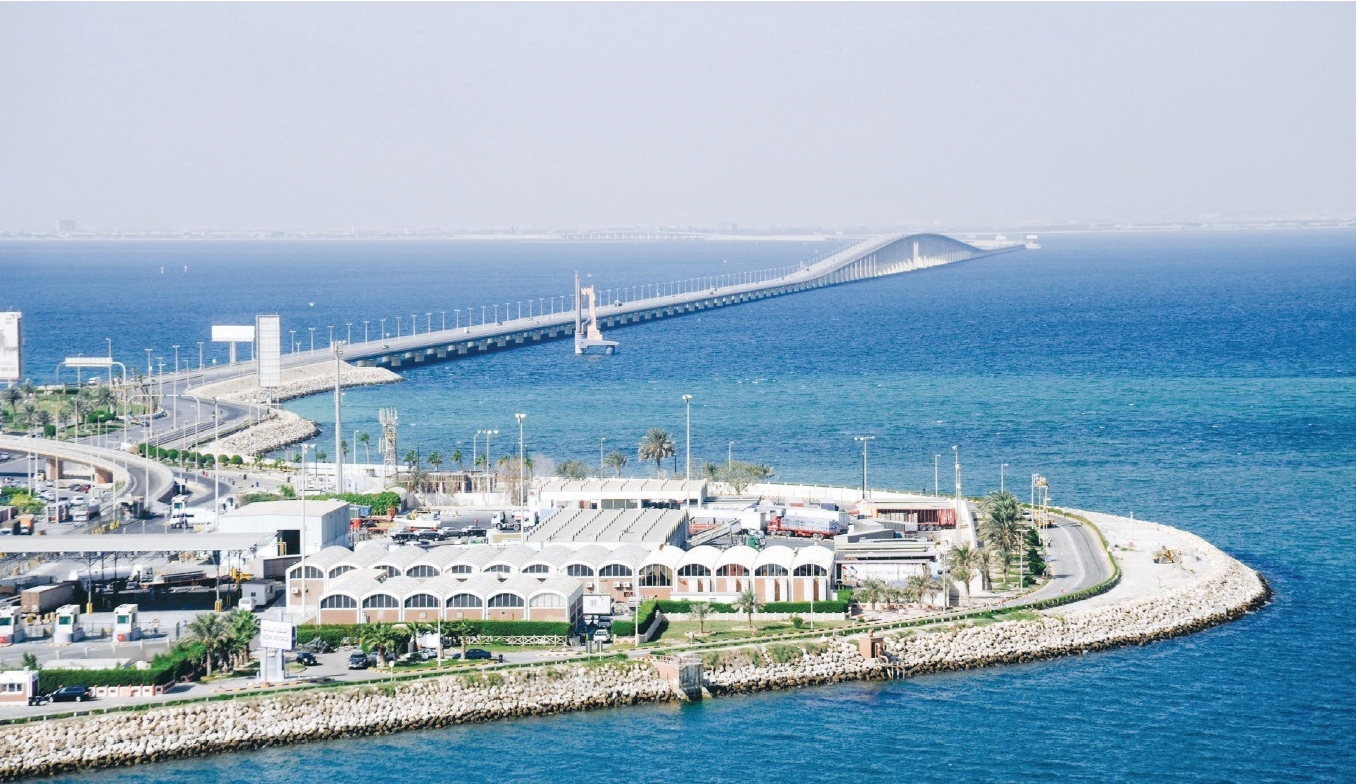
法赫德国王大桥(阿拉伯语:جسر الملك فهد),又名巴林道堤桥,位于波斯湾中的巴林湾,是连接巴林和沙特阿拉伯间的跨海公路大桥。大桥的命名是为纪念沙特阿拉伯的国王法赫德。
大桥自巴林岛西部的贾斯拉(Jasra)起至沙特阿拉伯的阿奇奇亚(Al-Azizia),全长25公里,其中填海造堤部分10公里,架桥部分15公里,由5座桥梁相连而成,中间的3号桥位于主航道上,留一个高28米跨度为150米的巨大船孔,供船舶通过。桥面有4条车道,两侧有人行道,每日可通行车辆3万辆,设计时速为100公里。包括连接公路等辅助项目,整个工程耗资达12亿美元,资金全部由沙特阿拉伯方面提供。
在巴林和沙特阿拉伯水域的相交处,建造了两座人工岛。每座岛上分别设立了两国的海关和边防站,设有办理移民、护照、卫生、检疫、海岸警卫、行政管理等各种业务的办公大楼。岛上还建造了高塔饭店。提供旅游观光服务。
大桥1981年开工,历时4年多,于1986年11月25日建成通车,从巴林首都麦纳麦通过大桥到沙特阿拉伯的胡拜尔市只要20分钟的车程,而过去乘渡轮则需要2小时。
Der King Fahd Causeway (engl. Bezeichnung in Saudi-Arabien und Bahrain, arabisch جسر الملك فهد Dschisr al-Malik Fahd, selten auch Bahrain Causeway, deutsch König-Fahd-Damm) ist eine kombinierte Brücken- und Dammverbindung zwischen Saudi-Arabien und Bahrain.
Die Verbindung wurde zwischen 1981 und 1986 gebaut, ist mit ihren vier Fahrspuren 24,6 Meter breit, 25 Kilometer lang und besteht aus fünf durch Dämme und Inseln verbundenen Brücken, welche zusammen eine Gesamtlänge von 12,43 km haben.[1] Für den Inselstaat Bahrain ist der Damm seit seiner Eröffnung am 25. November 1986 die einzige Straßenverbindung zum Festland. Die zunehmende wirtschaftliche Bedeutung dieser Verbindung führte zu Plänen für ähnliche Projekte zwischen Bahrain und Katar sowie zwischen Katar und den Vereinigten Arabischen Emiraten.
Für den vollständig von Saudi-Arabien finanzierten 1,2 Milliarden US-Dollar teuren Bau wurden 147.000 Tonnen Stahl benötigt. 2001 passierten 2,7 Millionen Fahrzeuge mit geschätzten zehn Millionen Passagieren den King Fahd Causeway.
Auf halber Strecke wurde eine künstliche, 66 Hektar große Insel aufgeschüttet, die je zur Hälfte Bahrain und Saudi-Arabien gehört. Auf ihr verläuft jetzt die einzige Landgrenze Bahrains. Die Insel wird Passport Island genannt.[2] Auf Arabisch ist die Bezeichnung al-Dschazira al-wasatiyya / الجزيرة الوسطية / al-Ǧazīra al-wasaṭīya gebräuchlich, in der Wortbedeutung zentrale Insel. Auf Google Maps findet sich entsprechend die Bezeichnung Middle Island (al-Dschazira al-wusta / الجزيرة الوسطى / al-Ǧazīra al-wusṭā).[3] Eigentlich wurde die Insel in Form von zwei verbundenen Inseln entworfen, von denen die westliche zu Saudi-Arabien und die östliche zu Bahrain gehört. Die bautechnische Bezeichnung lautet embankment no. 4. Es gibt sieben solcher embankments (Aufschüttungen) entlang des King Fahd Causeway, von denen die no. 4 die größte ist.[4]
キング・ファハド・コーズウェイ(King Fahd Causeway)は、バーレーンとサウジアラビアのアル・コバールを結ぶ海上橋。全線4車線、全長25km。1968年に両国で建設が合意され、1980年に着工、1986年に完成した。12億ドルの建設費用は全額サウジアラビアが出資し、橋の名前には当時のサウジ国王ファハド・ビン=アブドゥルアズィーズの名がつけられた。
全長25kmのうち、海上道路が10km、橋梁部分が15kmとなっている。途中、150mにわたって橋梁を高くし、船舶が航行できるようになっている。橋の中央には人工島が造られ、両国の出入国管理事務所があり、そこで折り返すことも可能。両国とも出入国管理所の手前に展望台タワーを持っており、橋を眺めながら休息し、食事をとることができる。
The King Fahd Causeway (Arabic: جسر الملك فهد, Jisr al-Malik Fahd) is a series of bridges and causeways connecting Saudi Arabia and Bahrain. The idea of constructing the causeway was based on improving the links and bonds between Saudi Arabia and Bahrain.[2] Surveying of the maritime began in 1968, and construction began in 1981 and continued until 1986, when it was officially opened to the public.
La chaussée du roi Fahd, en arabe Jisr al-Malik Fahd, جسر الملك فهد, en anglais King Fahd Causeway, est une chaussée, un ensemble de ponts et de digues, reliant l'Arabie saoudite à Bahreïn en franchissant le golfe de Bahreïn.
Son nom vient du roi Fahd, qui régna en Arabie saoudite de 1982 à 2005, au début de sa construction et dont le pays finança totalement les travaux.
Il ponte Re Fahd (in arabo: جسر الملك فهد, Jisr al-Malik Fahd) è una tratta di 25 km di ponti e dighe che collega l'Arabia Saudita al Bahrein.
La Calzada del Rey Fahd es un puente y viaducto combinado, que conecta la localidad de Khobar (Al Khubar), situada en Arabia Saudita, y Baréin. Ambos países acordaron construirlo mediante en acuerdo firmado el 8 de julio de 1981. Su construcción comenzó el 11 de noviembre de 1982, con la puesta de la primera piedra por el Rey Fahd de Arabia Saudita y el emir Isa ibn Salman al Khalifa de Baréin, y se completó en 1986, con la construcción de puentes y presas.
El proyecto, financiado completamente por Arabia Saudita, costó 1.200 millones de dólares. La carretera de cuatro carriles (25 metros) tiene 26 km de largo y se usaron 350.000 m³ de hormigón y 147.000 toneladas de acero reforzado. La calzada está compuesta de dos partes, un largo puente desde Khobar a la isla de Umm Alnasan en Baréin, y uno corto desde Umm Alnasan hasta la isla de Baréin. La calzada fue abierta al público el 25 de noviembre de 1986.
Мост короля́ Фа́хда (араб. جسر الملك فهد, англ. King Fahd Causeway) — комплекс мостов и плотин, связывающих город Эль-Хубар (Саудовская Аравия) с островным государством Бахрейн. Назван в честь короля Саудовской Аравии Фахда ибн Абделя Азиз Аль Сауда.
Соглашение о строительстве объекта было подписано 8 июля 1981 года; само строительство началось через год. Первый камень в основание моста 11 ноября 1982 года заложили главы государств король Фахд и эмир Иса ибн Салман Аль Халифа. Мост был построен к 1986 году; 25 ноября этого года состоялось торжественное открытие сооружения.
Проект полностью финансировался Саудовской Аравией и обошёлся в 1,2 миллиарда долларов США. Проложенная по мосту четырёхполосная дорога простирается на длину более 25 километров.
Комплекс мостов делится на три части: сочетание трёх мостов, ведущих из Эль-Хубара на искусственный остров на границе Саудовской Аравии и Бахрейна (в их число входит самый длинный мост, длиной 5194 м); мост, ведущий с искусственного острова на остров Умм аль-Насан; и ещё один мост, связывающий Умм аль-Насан с островом Бахрейн.
В феврале 2003 года на мосту короля Фахда бахрейнской полицией было арестовано пять человек, подозреваемых в связях с террористической организацией Аль-Каида. В марте 2011 года мост короля Фахда позволил оперативно перебросить 1000 саудовских военнослужащих и 500 полицейских ОАЭ для борьбы с беспорядками в Бахрейне (2011).
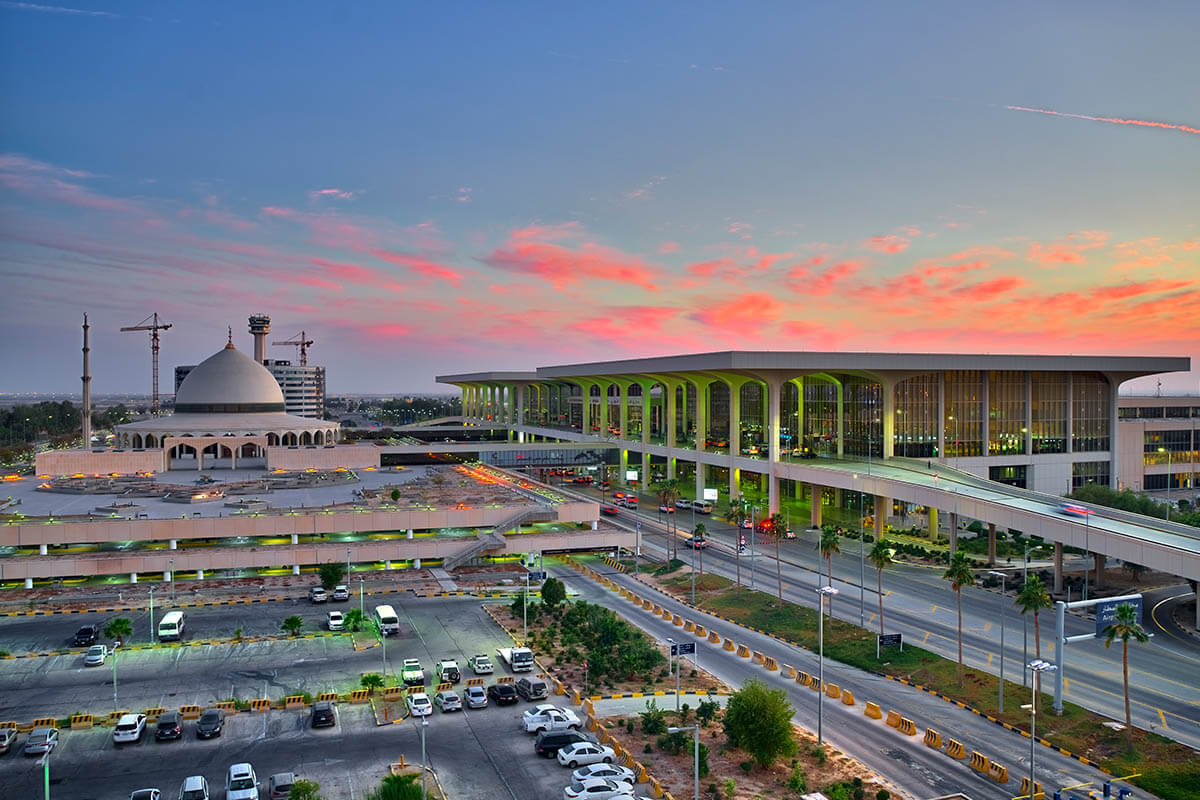

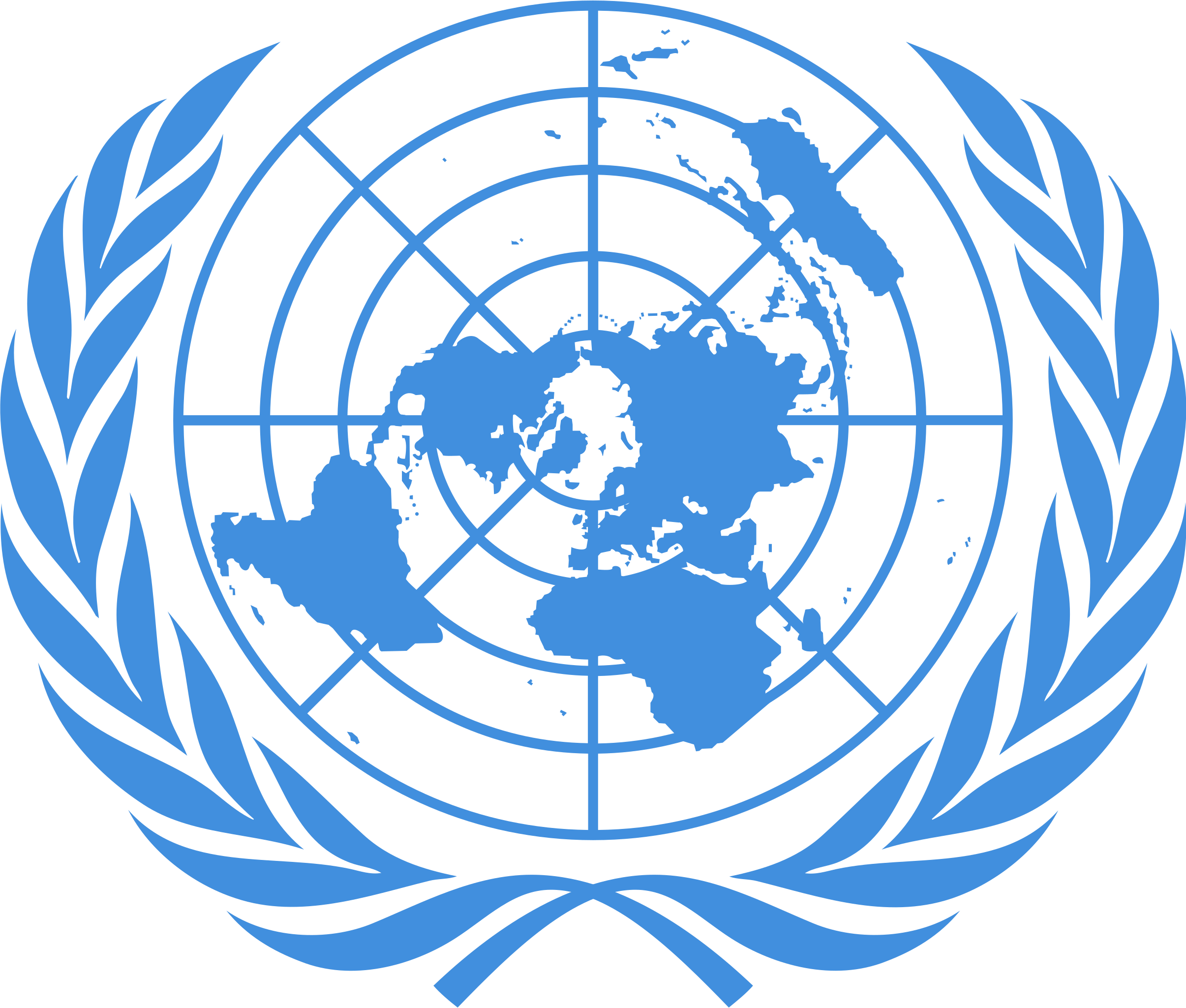 United Nations
United Nations
 Sport
Sport
 History
History
 Religion
Religion
 Architecture
Architecture
 Ships and Nautics
Ships and Nautics

 IT-Times
IT-Times
 Science and technology
Science and technology
 Transport and traffic
Transport and traffic